
Guide
Why I’ll lubricate my linear switches in breast milk cups from now on
by Kevin Hofer

Mechanical keyboards are great. At least I think so. They're even better because you can assemble them yourself. I'll tell you what you need to make your own keyboard.
I have built myself a gamer PC. After years on Mac, I finally wanted something home-made again. Now, of course, I also need a keyboard for my new favourite gadget. I want to replace the rubbish Apple keyboard as quickly as possible. Instead of mass-produced designer goods, I want something customised. If I'm already building a PC, why not a keyboard as well?
After a little research, it's clear that this should be easily feasible. And the possibilities are overwhelming. A look at the Reddit page on mechanical keyboards shows what's possible. Now I'm definitely hooked. What do I need so that I soon have such a great keyboard on my desk?
Before I order the individual components, I have to think carefully about what I want and need. It's clear that a self-built keyboard consists of six components: housing, PCB, switches, cover plate, stabilisers and keycaps.
The housing is obviously important for the design. But that's not all. There are different keyboard sizes. In jargon, we speak of sizes in per cent. For example, there are 40 per cent keyboards that are reduced to the most basic level, as well as full-size keyboards and those in between. Here you can find an explanation of the sizes.
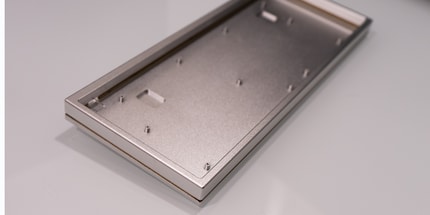
However, it's not quite so easy with branded keyboards. They allow a variety of configurations and it is also possible, for example, to accommodate a numeric keypad on a 75 per cent keyboard. If you decide in favour of such a special layout, you need to be particularly careful when looking for keycaps. With complete sets, not all keycaps will fit in terms of size.
Cases are available in aluminium, plastic, transparent acrylic or wood. Firstly, it is important what look you want to give your keyboard. But the properties of the materials also come into play. Enclosures made of aluminium and wood are heavy and therefore do not slip easily. However, they are less suitable if you take them with you frequently. Aluminium is also susceptible to scratches. Plastic or transparent acrylic would be more suitable in this case. With transparent acrylic, you can also set the scene for your keyboard with RGB.
The PCB is the heart of the keyboard. Depending on the PCB, you can customise the layout of your keyboard. It is therefore also possible to place a numeric keypad on a 75 per cent keyboard.
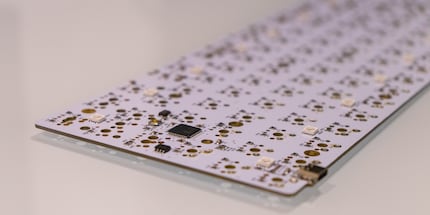
Most PCBs allow you to configure each key individually. This allows you to fully customise the keyboard layout. You don't have to do without LEDs either. Some PCBs offer pre-assembled RGBs or at least the option to solder them on. These then provide the backlighting. If you don't dare to solder, there are also PCBs that you only need to plug the switches onto.
After the look and layout, it's time for the feel. The switches probably play the biggest role here for most people. For me, a comfortable feel when typing and gaming is the most important thing about a keyboard. Switches differ in terms of trigger point, trigger force, key travel and whether the switches are linear, tactile or clicky.
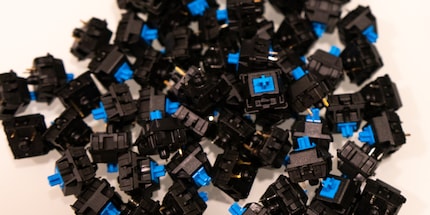
The trigger force describes how hard you have to press for your input to be registered. This is usually specified in centinewtons (cN). The trigger point is the distance that a switch must be moved before a signal is triggered. The key travel refers to the entire pressure path of a switch. Linear, tactile and clicky in turn describe the type of feedback. Linear switches do not give any feedback as to when they are triggered, you only feel the key travel. With tactile switches, you can feel the trigger point. With clicky switches, there is also a clicking sound at the trigger point.
Switches are very individual. In addition to the haptic properties, you can also decide whether you want RGB switches or switches without illumination.
The cover plate holds your switches in position and protects the PCB from environmental influences such as your "Gipfeli-Brösmeli". Like the housing, cover plates are available in different materials. When purchasing, make sure that the cover plate matches your housing and PCB layout.
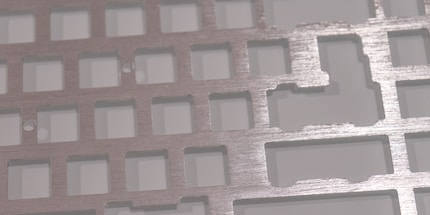
You need stabilisers to give your wider keycaps a secure hold. When buying stabilisers, it is important that you buy ones that can be screwed onto the PCB. This way, they are guaranteed to hold, unlike those that you simply push on.
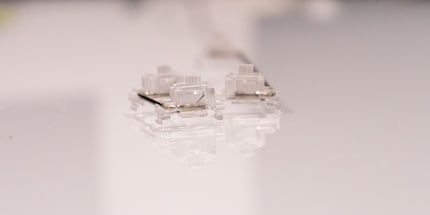
With keycaps, you can definitely give your keyboard a unique look. Keycaps are available in various shapes, colours and materials. Depending on the layout you choose, however, you are somewhat limited. You won't find a 7-space key as often as a 6.25-space key. When buying, you should therefore make sure that the caps also fit your keyboard layout. Or you can simply print them yourself. The size of keycaps is specified as follows: Size 1 corresponds to the narrowest key, for example the key with the letter "A". The other sizes are then specified in relation to the width of this key. A 6.25 space bar is therefore 6.25 times wider than the A key. The possible keycap sizes can normally be found in the PCB specifications.
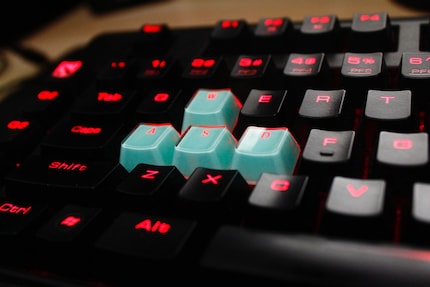
From big data to big brother, Cyborgs to Sci-Fi. All aspects of technology and society fascinate me.
Practical solutions for everyday problems with technology, household hacks and much more.
Show all